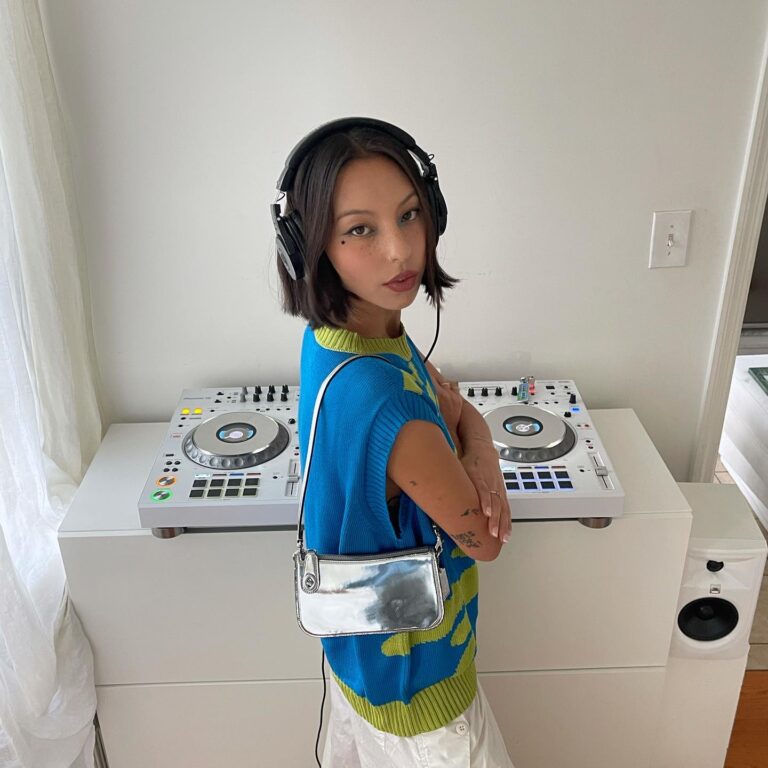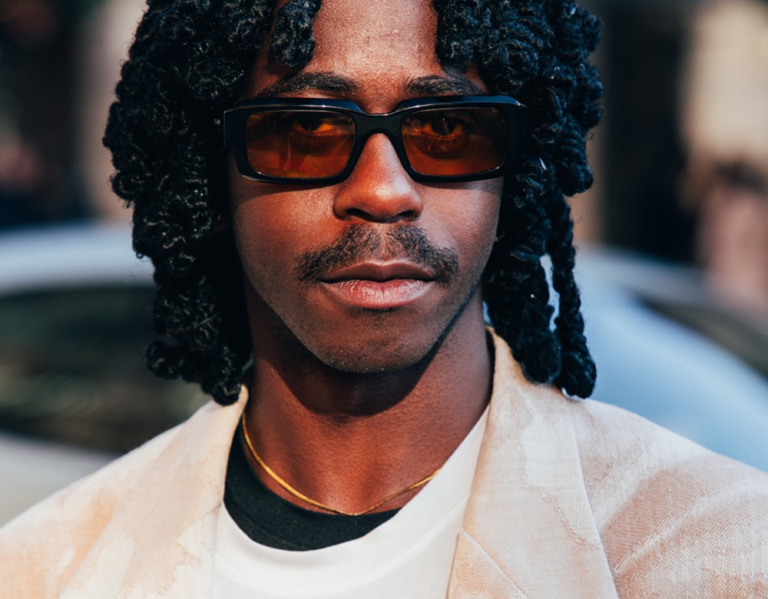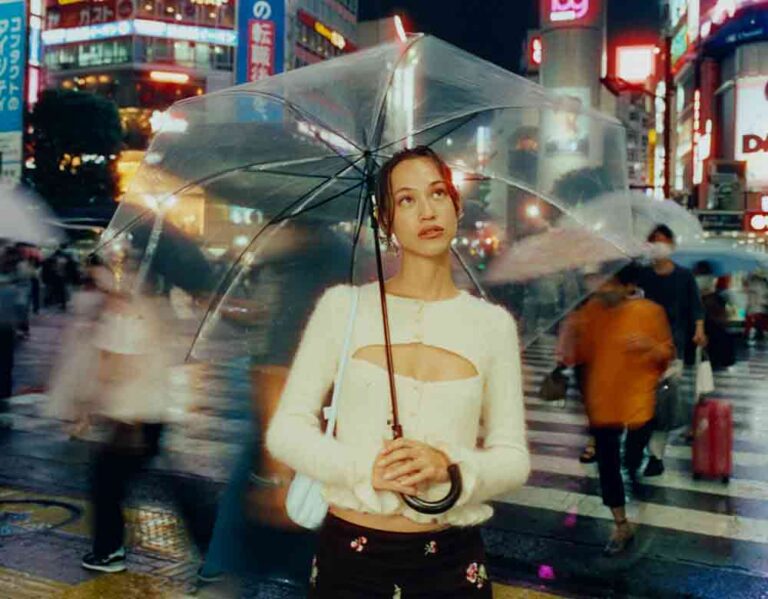Jeanie Annan-Lewin, Creative Director & Stylist, London

Please introduce yourself.
My name is Jeanie Annan-Lewin. I am currently the Creative Director/Fashion Director at Perfect [Magazine].
What does your job consist of?
My job involves lots of different things. I start with helping to commission for the upcoming issue, which is mainly a group project – we call ourselves a collective, because we really work in unison. We brainstorm ideas and I’ll add or detract from them.
"What I’m usually trying to do is find people that interest me - a little bit out there, a little bit weird, but in the best possible way."


What does your day-to-day look like?
When we’re starting to work on the issue, it’s mainly having meetings with Katie [Grand], Bryan [Yambao], Paul Flynn and all of the people in the office to talk about what things are lighting our fire, what talent we’re into… I am someone who’s not traditionally into “talent”. There’s people who I love and have admirable crushes on but they range, so it’s a whole spectrum. At the moment I’m going through this thing where I feel like celebrity culture isn’t the way it used to be because we have access to celebrities, so what I’m usually trying to do is find people that interest me that also still feel like the essence of Perfect – a little bit out there, a little bit weird, but in the best possible way.
A typical day-to-day when we’re in production starts with having meetings, trying to figure out talent, what brands we want to focus on or highlight, what fashion we like, what writers we want to get on board, and trying to map out the whole issue really. Then we go into a process of trying to lock those people down, figure out where they are and who can shoot them in the allotted time.
How long is the process for each print issue?
I think it’s roughly six to eight weeks.
Wow, that’s really quick! I thought it would take a lot longer.
Yeah, it’s usually really quick! What normally happens is that we come back after [fashion season] shows and have one initial meeting where we don’t get much done. Then we go onto having another meeting that starts to solidify ideas. Then it’s just narrowing those down and thinking of a theme. Katie has been doing this work for such a long time so she’ll come in with ideas and ask us about our opinions, but it’s all a conversation, which I’m really thankful for because there are so many places where that doesn’t really happen. It always starts off as a conversation and develops into a whole different thing.
Were you always interested in fashion? Did you want to work in the industry growing up?
I did, I just didn’t know how. Looking back now, I was always really obsessed with clothes and fashion and telling stories. When I was little I was very meticulous with my outfits. I loved telling stories but I didn’t know it was possible to tell stories through clothes till I was out of uni and much older. I didn’t want to be a fashion designer because I didn’t think I had anything to say in that way, but I would religiously be obsessed with magazines and spend all of my money on them. I would go without lunch to get copies of The Face, Dazed and British Vogue in particular, and what I found was I could not see myself in many publications. I wanted to be in that world but I didn’t know in which language I could speak. Then I went to uni and studied Art History. I wanted to be a curator and suddenly realised that art curators don’t actually make that much money, because most are independently wealthy. I did an internship somewhere and everyone was walking home and I had to get two trains and a bus. It suddenly dawned on me that I wasn’t financially able to do that job.
I saw somewhere that you mentioned the first person you assisted was Isabella Blow – was that your entry into the fashion industry?
I wrote to magazines haphazardly just asking to be an intern. I cold-called a couple of people as well. I called Tatler and they asked if I could come in the next day. I turned up and, as I say famously, I don’t look how I sound – the gift of code switching! I was supposed to be there for two weeks and I ended up staying there for a year working under Isabella Blow. She was my proper first entry into the industry. She spoke in the language of references, and her references were always amazing paintings. I remember one time we were talking about a shoot and she pulled up all these amazing Renaissance paintings and I thought, Oh my God, that’s how I can do this and relate it to a fashion shoot! I think it was a bullfighting scene and they did a shoot and the references looked like that, so my brain was like, Okay, this makes sense. That’s the language I can speak in. Hence why now I’m so good at references.
By the time I was leaving, Isabella was very sweet and ended up calling Dazed, Pop and i-D, and she called Camilla Lowther and told them I was really smart and they should hire me. I went on to intern at all of those places, either by working with a stylist there or with the publication itself. That’s how I got my foot in the door.
"my visual language is really unique because it’s so chaotic."






Do you think your education helped you to get to where you are and if so, how?
Yeah, definitely! I speak in a visual language and I think my visual language is really unique because it’s so chaotic. I am somebody who loves 2Pac, who also loves old Japanese literature, and who also loves Manga. I think the reason why I speak Gen Z so well is because I’m a bit like a kid and I love to feed my eyes. When I first started doing stuff on Instagram, I used to just post reference pictures all the time. I couldn’t get access to styling jobs, I wasn’t confident enough to call myself a stylist, so I used to just put up things that related to me over and over again. Then I found that all the people that followed me, it was lots of art directors and people who worked at magazines. At that point I didn’t even realise that what I was doing was impactful. People would end up taking inspiration from my Instagram and then after a few months you’d see it on catwalks and that was mind blowing.
It’s interesting because you said that you wanted to be an Art Curator, but in some ways you used your Instagram to do that but through a fashion lens.
I have been unknowingly curating things for the best part of my life. I do it all the time with everything. I can’t help it, I want things to look a certain way. It’s my personality! When I was doing my own research and looking at magazines you could kind of see people’s references, and I always thought that that was really nice to point out. I was really obsessed with Renaissance sculptures when I was growing up, I always loved to see how the body moved and how the body was manipulated. Then you’d see it translated into paintings and then, later on, translated into shoots. It’s still something that follows me around now.
"Build a community."
What qualities and personality traits do you think has made you get to this point in your career, both for styling and for creative direction?
If it wasn’t someone dying on the street for eight minutes – which was fucking horrific – I definitely wouldn’t be where I am today. Simple as that. Did I think I would end up getting here this way? Absolutely not. I’m thankful that it did open up lots of conversations and people saw me differently, and saw what I was saying differently. I felt for a very long time in this industry that I was losing my mind because I felt like I was pointing out the obvious. Everyone would say that I was upset that I hadn’t reached where I wanted to but I would always say, “Okay, but why? Why do I go into rooms and there are not many people who look like me?”
What qualities do you have to have? Resilience. Weirdly, 2020 was the first time in my life where I could not see things the way I see them now. When I started doing this I always wanted to be successful and wanted people to see my work and be inspired by that, always. I could always see that, even when there were times I had no money and I was eating ramen noodles for 49p. 2020 was the first time that I could not see that dream. I thought I was talented and had something to say, but I had no way of seeing it, you know? You can only email people so far. But I had so much resilience. You have to believe in it in a way that no one else does. I had no backup plan! That’s what it was.
Make art and be creative because you want to be creative, instead of thinking of where it needs to go. Don’t email someone like me, go and make a zine! If you’re a stylist, go and find photographers that you like and collaborate with them. Build a community. Be really really comfortable with that before you approach magazines.


What do you most enjoy about what you do?
I love the concept, and the creation process – that’s the part I most enjoy. I really enjoy working on shoots… and the bit when it comes out, and then three days later I don’t care, and I want to move onto the next thing! Now I’m really excited because people can see Issue 6 and see all the things I’ve been working on, but by the end of next week I’ll be like, “What’s next?” But I’m trying to enjoy that a little bit longer.
What are the most challenging things about what you do?
The parts I don’t enjoy are the politics and all of the weird bits around it. How gatekeeper-y everything is and how people can be dishonest. Someone will say they’re fine with something and they’re not – that drives me insane! What’s that Franz Kafka quote? “Everyone showed up with their masks on, and I showed up with my real face”… that’s how I feel in fashion!
I feel like the quality that I see in you is honesty. I see it in your work, but also when you share things on Instagram and the way you curate things as well, it seems like it values honesty?
I don’t see being sensitive or being passionate as a weakness, I think it’s a strength! I think people spend a lot of time hiding behind these facades and I don’t know why. I get nervous about certain things but I think it’s much healthier to say it.
Finally, what advice would you give someone who’s interested in either styling or creative direction?
I think explore, experiment – go to a charity shop, get some clothes, use some clothes in your house and figure out ways of styling, think about things you’re really excited about and do small little projects on them. Grab a mate, go to a field and take some pictures! The best way of learning a craft is to visualise it, so it makes more sense.
I think a lot of people these days tend to be rushing. First of all, figure out what styling you want to do. If you want to style celebrities, that’s slightly different from wanting to do solely editorial, or anything in between. Learn what words mean, and go out there and practise your craft. You’d do the same thing if you were an artist. You wouldn’t talk about being a painter, you’d go and paint. With creative direction, start off with small case studies. Figure out what it is you like doing, figure out what part of creative direction you like. Is it the creation of texts, and the words and image placement or is it the idea of generating ideas? I encourage people to look beyond aspiring to be someone else or wanting to have access to the same things as those people. Figure out what you can do with what you have.
LATEST THAT MAY INTEREST YOU





